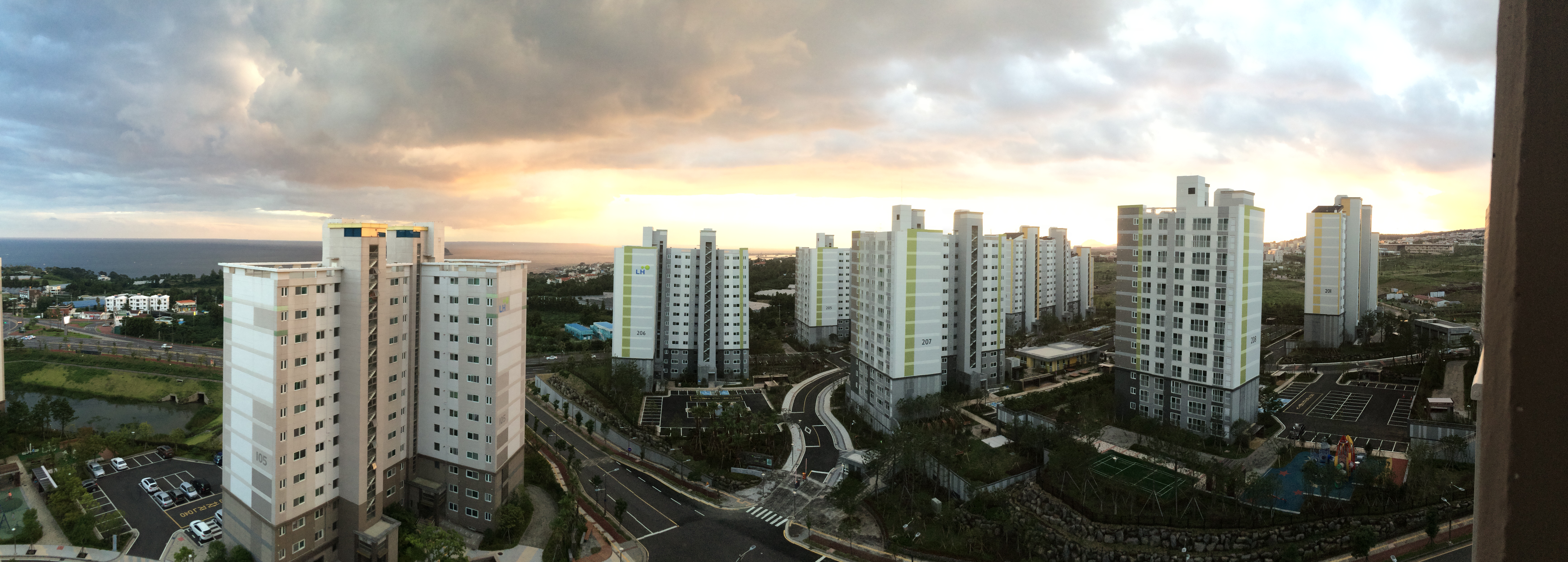Korea South, Seogwipo
FC-01x Future Cities (Self-Paced) - Exercise 1 : "Making the Invisible - Visible"

Uploaded on 2016-08-02 by Junho Choi
I live in the outskirts of Seogwipo, Jeju Island, South Korea. This area quite near the shoreline hence being able to see the sea from the photo. Here due to it being the outskirts, there is a great mix of traditional old houses (small ones only a couple of stories tall at most) and new building developments (such as the apartment blocks). In terms of visible information in the photo, most obvious are the apparent apartment blocks. However, nearby there are also expanses of open field along with car parks and multiple roads, with the main road running across the photo from left to right. Moreover, in the distance there are multiple small houses and the shoreline is clearly visible from the photo. The first invisible information one can discern from the visible information is which people live where and for what reason. For example, one can extract who lives in the apartments and what proportion are from the mainland as opposed to native islanders. Moreover, one can found out the ratio of people living in new buildings to those in old in the area. Furthermore, the reasons for living in each place can be discerned. For example, the reasons for living in small housing may be that it simply is a family home that has been occupied for years before. The reasons for living in apartment may be to deal with over crowding near the shoreline. Thus, an array if invisible information about the nature of people living in different places can be extracted form the visible information. The second invisible information that can be extracted is the movement of people. This can be primarily discerned from the visible information of the roads. Thus one can use this find out how efficient the road system is for residents by measuring congestion levels and how common public transport by seeing the use of bus on the main road. Moreover, one can also extract the places in which people park their cars and whether there is indeed enough allocated space to park cars. The most interesting thing about this area is that, as it is on the outskirts of a currently developing urban area, it will be interesting to see how the invisible information changes as this area is developed and perhaps how the development changes by taking into account the invisible information that is extracted.